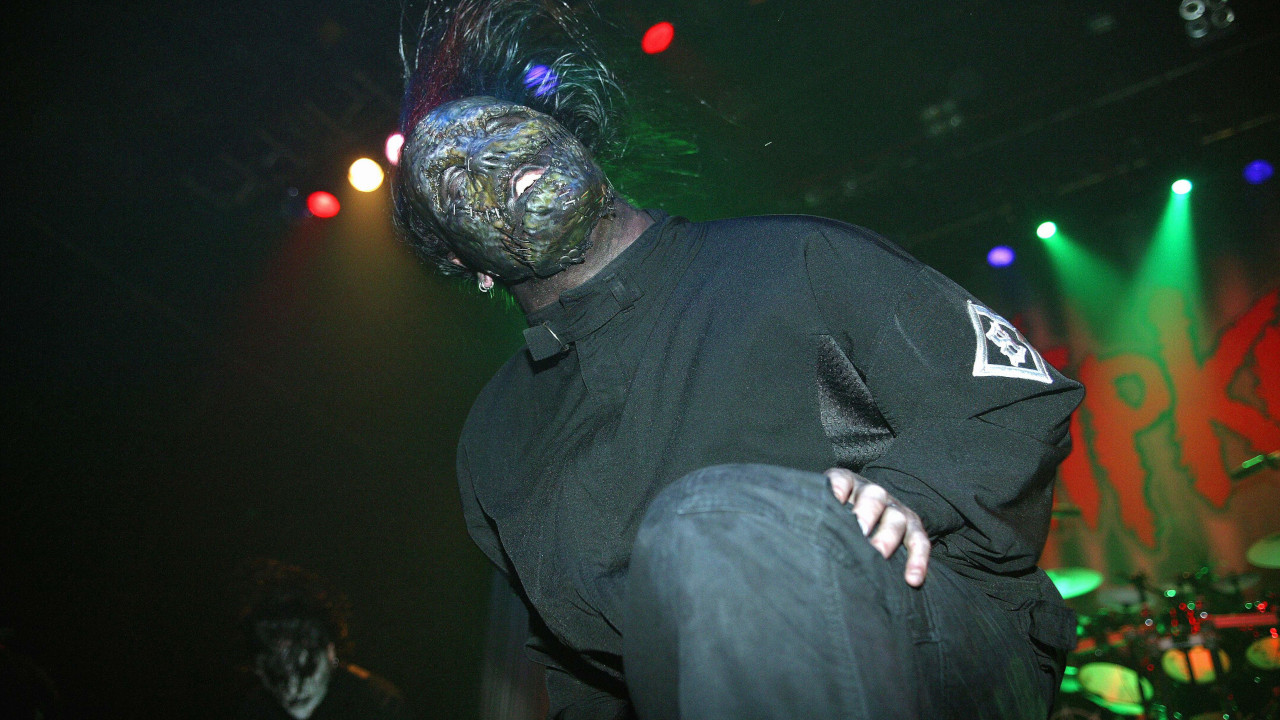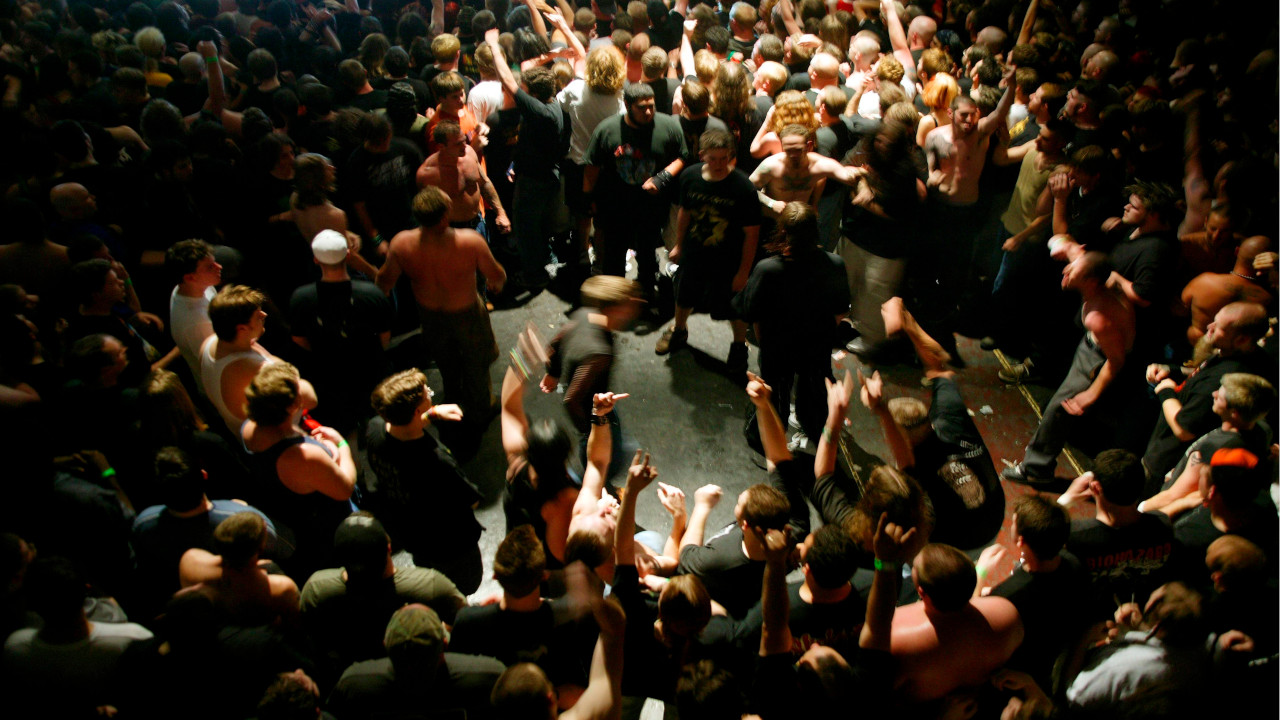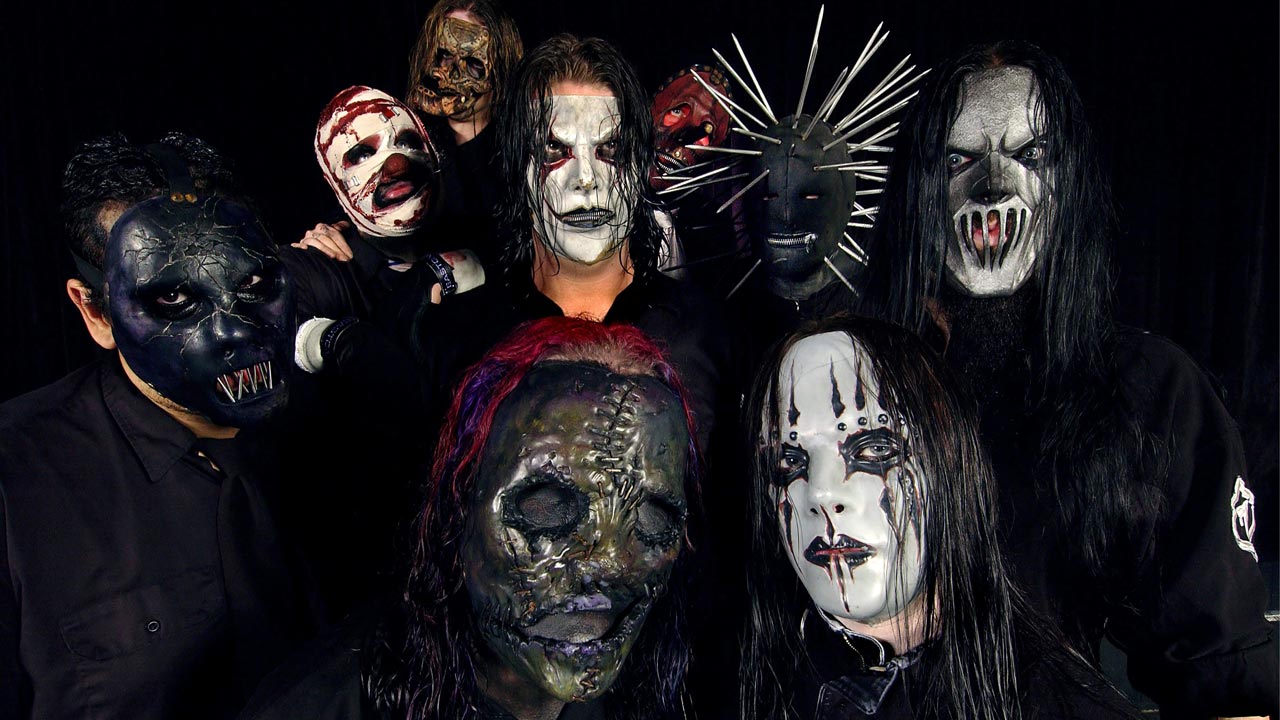By the time Slipknot went in to record Vol. 3: (The Subliminal Verses) they were on the fast-track to cementing their status as the 21st century’s biggest metal sensation. With Duality, they had one of the 21st century’s biggest anthems in the bag. Five years prior, the band’s self-titled debut album had catapulted them into the mainstream consciousness, exploding out of the nu metal bubble in a frenzied, 18-legged whirlwind of mayhem and misanthropy.
Two years later they transcended all expectations with Iowa, not only nabbing Number 1 spots in the charts in both the UK and Canada, but also Top 10 in a further seven countries (including No.3 at home in the USA), doubling-down on their most extreme inclinations as they incorporated more death metal and grindcore influences into the mix. The only problem was, it had damn near killed them.

“Everybody was trying to force us to go back and do Slipknot," Corey Taylor told Hammer in 2004. "I was like, ‘fuck you! I’ll quit the band before you make me fucking do this!’”
The stresses of near-constant touring and inter-personal conflict after Iowa’s release had turned Slipknot into a personal hell for each of its members by the time the album’s promo cycle was through. Worse still, many of the bandmembers were contending with substance abuse issues that only further exacerbated their animosity towards each other; the grim darkness of Iowa itself was writ large in just how bad the members’ relationships had become. Speaking to Hammer in 2004, Taylor told Hammer "The subject matter [of Iowa] was really a reflection of what was going on at the time. It’s so dark I can’t listen to it now."
Luckily, they were able to tear themselves away into other pursuits before they tore each other apart. Drummer Joey Jordison recruited Frankenstein Drag Queens From Planet 13 vocalist Wednesday 13 to form horrorpunks Murderdolls, Shawn ‘Clown’ Crahan formed experimental rock act To My Surprise and Corey Taylor and Jim Root revived Stone Sour, their pre-Slipknot band. For a time, the members were (relatively) happy, the stresses of Slipknot ebbing away as they rediscovered their love for music and reminded themselves why they lived for it in the first place. But like any vacation, cold hard reality has to come back at some point.
In August 2003, the members of Slipknot were thrown in at the deep end when it came to reconnecting after their time apart. Holed up together in The Mansion (producer Rick Rubin’s studio in the Hollywood Hills), the band barely spoke for months as the writing process grew more laboured.
Jordison later told Revolver, “I flew down to Los Angeles and arrived expecting to practice. I walk in and Corey says, ‘No, I'm going to the Rainbow’. Shawn says, ‘No, I'm working on something else.’ I'm like, ‘What the fuck?! We're not fuckin' jamming?’ So I go get a bottle of Jack Daniel's and drink myself into oblivion. Then I wake up at 3 o'clock the next day and say, ‘Right, let's jam,’ and no one wants to. It took us three fuckin' months before everyone came together.”
With expenses mounting and time pressing on, the band ultimately broke and began the process of writing their next record. Though they had already somewhat shifted away from nu metal on Iowa, a conscious decision was made with Vol. 3 that the record would rebuild from the ground up. That included recording guitar solos for the first time, a concept that had been anathema during the height of nu metal but now appealed to guitarists Mick Thompson and Jim Root, who were eager to show off their skills.
A potshot from Corey Taylor incited some hate from the GWAR camp for a time (by no means Corey's last beef with another musician) when he admitted he “didn’t want the band to hang out after we’ve lost our relevance,” but ultimately the band were itching to move on to bigger and better things. Luckily, producer Rick Rubin was something of an expert in reinvention, helping everyone from Slayer to Johnny Cash up the ladder over the years. While Rubin boasted an impressive resume of artists, his contributions to Vol. 3 were somewhat debatable - from the band's perspective, at least.
Speaking to Revolver, Clown was resolute. “Vol. 3: (The Subliminal Verses) was all about healing. Rick Rubin sat us down and we talked things out… Since we were rebuilding friendships, it was real easy to rebuild the innovation of our music. We took some chances, but it wasn't like someone was guiding us. These are things we'd been wanting to do. Listen to that fucking record. It's spiritual.”
While Jim Root attested that Rick was “Big Brother up on the hill,” and “really attentive to what we needed as a band”. Taylor, ever the motormouth, wasn’t so convinced: “[Rick] kicked it on the couch, stroked his beard and nodded, then he was out”. Asked if Rubin took them to new places, Taylor responded “We were thinking of going there anyway but he definitely encouraged us”. Taylor praised engineer Greg Fidelman instead. Speaking on the Let There Be Talk podcast, he said “[Rick was a] nice guy, absolutely nice guy, however, Fidelman was there soup to nuts with us, man. He was there from sometimes six in the morning till four in the morning, I mean, every day, when we needed him.”
Though in later years Taylor admitted that much of his frustration stemmed from personal battles he faced at the time, deciding to quit drinking during the recording process after he almost fell from a balcony whilst intoxicated, saved only by a friend and his wife who were with him at the time. The choice to go sober was a positive step, but the physical toll it took on Taylor’s body left him strained and frustrated with may of his vocal takes on the record, further cementing his anger towards Rubin.

The band finished recording in early 2004, allowing them to hit the road again shortly after. The band unveiled their new masks on the Jägermeister Music Tour on March 30th, playing across the US with Chimaira and Fear Factory until early May that year. With the album release date looming on May 25th 2004, a digital release of Pulse Of The Maggots gave fans a first taste of the record, though stylistically the track still drew from the same well of inspiration as much of their previous material. As such, the band’s first ‘official’ single of the record ended up being a song that would define their sets for years to come: Duality.
‘I push my fingers into my…’ – in one visceral sentence, Taylor set the scene for the frustration and turmoil he had contended with in recent years. The song’s enormous vocal hook retained enough of Slipknot’s heaviness, but its structure was something almost purely radio, or at least as close to radio-friendly as Slipknot dared to venture. It became a defining anthem in Slipknot’s sets (and metal clubs around the world), a shared pain between band and fans that would be overcome by the time Taylor snarled over a beatdown ‘I’m not gonna take it!’
Speaking to MTV ahead of the song’s release, Jordison said, “It's got one of the heaviest grooves we ever came up with. It's a dark song, but the chorus is very liberal as far as tones and things that we've never done before, and the things we've done with [singer] Corey [Taylor]'s voice are really wild."
If the band thought they had been wild during the recording of the track, they hadn’t seen anything yet. Looking to reflect the more personal nature of their new album, Slipknot were looking to escape the bright lights of LA and New York to return to their hometown in Des Moines, Iowa. They ultimately settled on recording the music video to Duality in their hometown, in a house owned by a fan. The initial plan was for the band to "bounce around it like sardines in a can", but when they put out a casting call for Maggots to attend the shoot, all hell broke loose.
Justifying the callout for the shoot, Jordison told MTV, “the video was actually shot in our hometown in Des Moines… about 10 minutes from my house. A band like us is really grassroots, everything that’s happened for us was born there. We wanted a video that showed the integrity of the band and the relationship with the fans. There’s no special effects – there were kids falling through ceilings, flying through glass, jumping off roofs”.
In the initial callout, the band had expected 50-100 Maggots to respond to the call, but once word got out people began to travel from far and wide. One fan flew from Ukraine, while another teenager flew from Hastings and ultimately ended up staying at Corey Taylor’s house. The sense of community that had coalesced around Slipknot was now incredibly palpable, and the band were eager to capture the response to their new song. Initially trying to keep damage to a minimum, the band began playing the song in the house while fans reacted.
Everything went to utter bedlam when Slipknot DJ Sid Wilson broke a window, which then saw fans following his action with every other window in the house. If you’ve ever watched the Duality video and thought, ‘How was nobody hurt?’ the answer wasNo. they were, they just didn’t care. Two fans ended up getting minor slashes from broken glass and two more were taken away after destroying a rented Ford Taurus with baseball bats they snuck into the shoot, but remarkably everyone walked away from the shoot relatively unscathed. Except for the house of course; that was fucked.
Speaking to Metal Injection after the shoot, Jim Root said “[my] understanding was that the people who owned the house uses it as an income property, so they were going to remodel anyway. To what extent, I don’t know, but they’re definitely going to be remodelling now!”

Though damage to the house was extensive, Slipknot’s label Roadrunner ultimately agreed to pay $50,000 for damages. Considering it effectively balanced out one of metal’s most iconic music videos, we’d call that a fair trade.
As for the single itself, Duality reached No.5 in the Hot Mainstream Rock Tracks and No.6 in the Hot Modern Rock Tracks in the US, while getting to No.15 in the UK. Meanwhile, it helped Vol. 3 itself again make a raid of the Top 10 internationally in 15 countries. Though the album did not chart as high as its predecessor, it brought the band ever closer to topping the charts at home when it peaked at #2, whilst also cementing Slipknot as one of metal’s most unpredictable creative forces.
Duality remains one of the 21st century’s most recognisable metal anthems, with over 374 million streams on Spotify and 309 million views on YouTube. The sound of internalised pain being turned into communal catharsis, the track redefined the parameters of what Slipknot could sound like whilst giving them a more personal connection with their fans than they could ever have thought possible.
All together now, ‘I push my fingers into my…’

